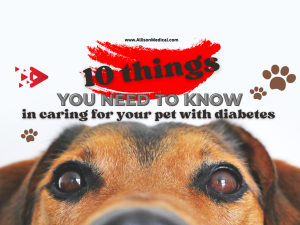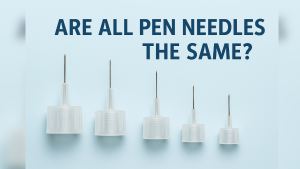Be sure to talk to your healthcare professional before making any treatment changes.
Introduction:
Managing diabetes in pets involves a holistic approach, and nutrition plays a crucial role in maintaining their well-being. In this blog, we’ll explore the dietary considerations for pets with diabetes, including suitable foods and those to avoid.
Crafting a Diabetes-Friendly Diet:
1. High-Quality Protein:
– Opt for high-quality protein sources, such as lean meats and fish. Protein helps maintain muscle mass and provides a steady energy source.
2. Complex Carbohydrates:
– Choose complex carbohydrates that have a slower impact on blood sugar levels. Examples include whole grains like brown rice and quinoa.
3. Fiber-Rich Foods:
– Include fiber-rich foods, like vegetables and legumes, in your pet’s diet. Fiber aids in digestion, helps regulate blood sugar, and promotes a feeling of fullness.
4. Moderate Fat Content:
– Maintain a moderate fat content in the diet. Healthy fats from sources like fish oil or flaxseed can support skin and coat health.
5. Well-Balanced Meals:
– Aim for well-balanced meals that provide a mix of protein, carbohydrates, and fats. Consult with your veterinarian to determine the appropriate portion sizes for your pet’s specific needs.
Foods to Avoid:
1. High-Glycemic Carbohydrates:
– Minimize or avoid high-glycemic carbohydrates like white rice and refined grains. These can cause rapid spikes in blood sugar levels.
2. Sugary Treats and Snacks:
– Steer clear of sugary treats and snacks. Opt for healthier alternatives or consider using low-carb treats specifically designed for diabetic pets.
3. Excessive Fat and Calories:
– While a moderate amount of healthy fats is beneficial, excessive fat and calorie intake can contribute to weight gain, which may worsen diabetes. Ensure meals are portion-controlled.
4. Table Scraps:
– Avoid feeding table scraps, as these can introduce unexpected and potentially harmful ingredients into your pet’s diet.
5. Inconsistency in Feeding:
– Maintain a consistent feeding schedule. Inconsistency in meal timing can affect blood sugar levels.
Monitoring and Adjusting:
1. Regular Veterinary Consultations:
– Work closely with your veterinarian to establish an appropriate diet plan. Regular check-ups allow for adjustments based on your pet’s evolving needs.
2. Blood Sugar Monitoring:
– Monitor your pet’s blood sugar levels regularly, especially after meals, to assess how the chosen diet is impacting their condition.
Conclusion:
Crafting a suitable diet for pets with diabetes involves thoughtful choices and ongoing collaboration with your veterinary team. By providing a balanced and tailored diet, you contribute significantly to the overall health and well-being of your cherished companion.
For More:
Allison Medical News
American Diabetes Association
References:
1. American Veterinary Medical Association (AVMA). “Nutrition and Your Dog’s Health.”
3. Cummings Veterinary Medical Center at Tufts University. “Feeding Your Diabetic Cat.”
4. Merck Veterinary Manual. “Diabetes Mellitus in Dogs and Cats.”









